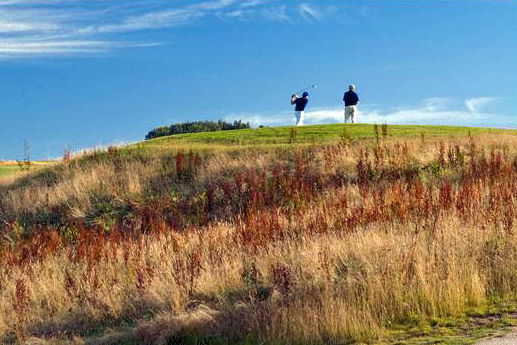How to hit shots from the rough
Instructional gems to keep your scores low

One of our regular visitors to the site asked about playing out of the rough. Did anyone have any suggestions?
At ‘Golfmagic we ‘ve always got hints and tips to keep your scores low.
This time of year the rough is pretty dormant but anytime soon as the earth gets warmer that clinging grass and weed is going to grow and wrap itself round your club head at the first opportunity – if, indeed you can find your ball!
Here’s a handful of tips to help you escape without egg on your face and a double-bogey – or worse - on your card.
1 Don’t be a hero
When a ball settles in the rough don’t expect to crush it out of there and achieve the same distance you maybe would have from a perfect lie. Use extra loft to play it back into a position from which you can make a good swing. It’s all part of good course management to save you shot-making mistakes
2 Open the face
A good tip to get the ball out of thick rough is to open the face at address. Don’t twist your hands to the right (for right-handers) turn the clubface in your hands to ‘open it’ and add more loft, then re-grip firmly. As the club returns to impact the friction against the grass will tend to square it up from ‘open to closed’ rather than ‘square to closed.’
3 Upright and out
When the ball is nestling down in the rough, swing more upright to get it out cleaner. A more upright, rather than a rounded swing tends to get the clubhead to the bottom of the ball on a more direct path. Use more loft than you would normally for the distance required.
4 Seven is heaven
So many high handicap golfers, tend to stride into the rough armed with a 3- or 4- iron when faced with a long shot from trouble. Much better to invest in a 7-wood – ‘the gentleman’s persuader’. The small head of the club with its 24 – 27 degrees of loft and flat sole, is better suited to spread the grass and fire the ball out at a good launch angle.
5 Avoid a flier
During the summer months on fast running courses, a ball which finishes in the ‘first cut’ of fairway or ‘semi-rough’, can get out of control unless you take precautions. This is known as a flying lie, with the ball often perched in strands of grass. Unless you take one club less (more loft) than the distance you need to hit it, chances are you will strike it flush over the back of the green with a lot of top spin. Aim to pitch say a 6-iron for 5-iron distance, just short of your target and let it roll.
6 Leather it from heather
Heather and gorse look fantastic on a course but are probably the toughest conditions from which to play. The secret is not to be too ambitious. The tough strands and stalks will tangle round the clubhead if you go for too much distance. Pick your most lofted club, hang on tight and chop down hard to get the ball out to the nearest and best lie available. Take your medicine and you’ll have a chance to scramble your par or bogey.
Article first published February 2003, updated April 2013











